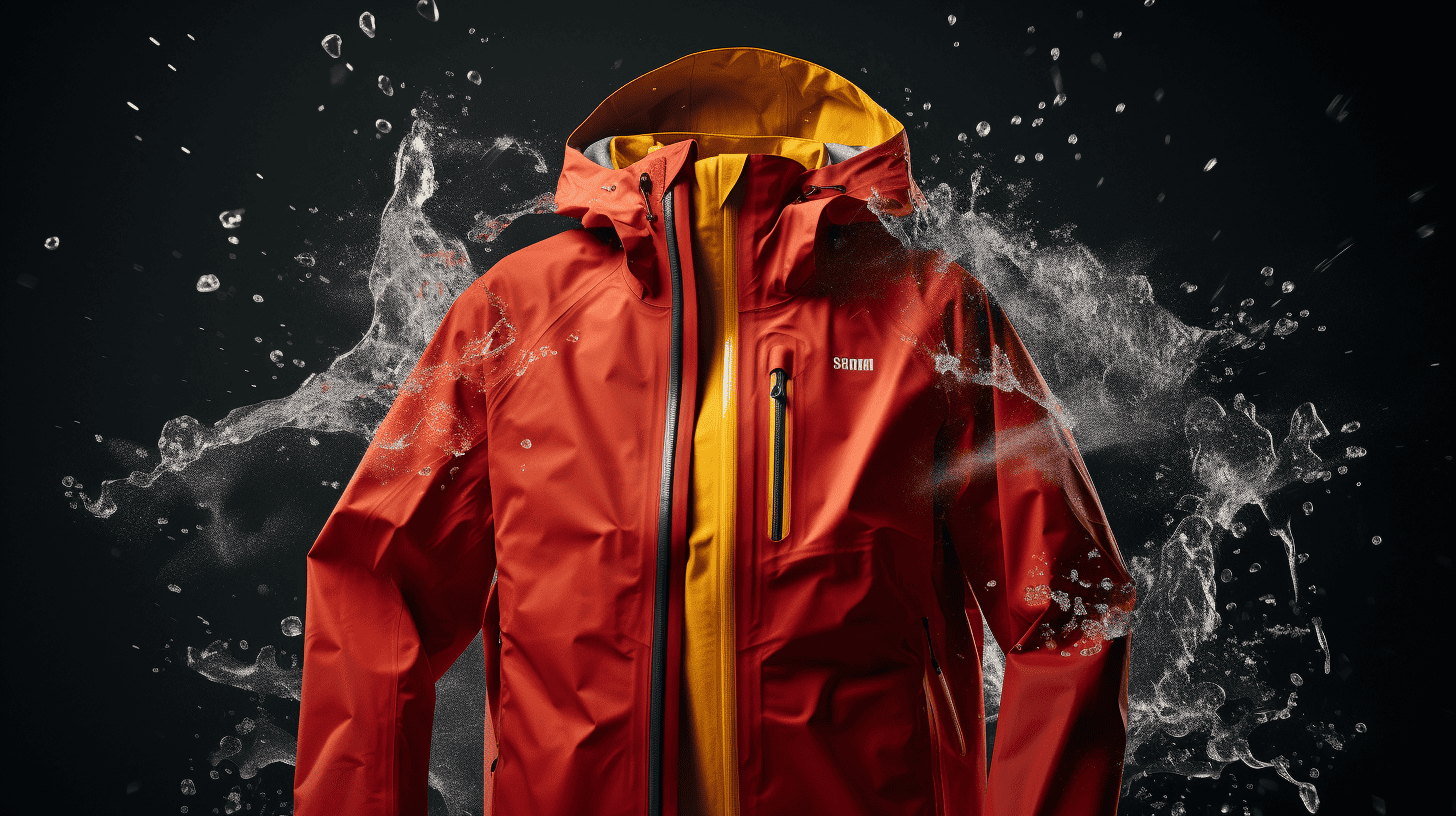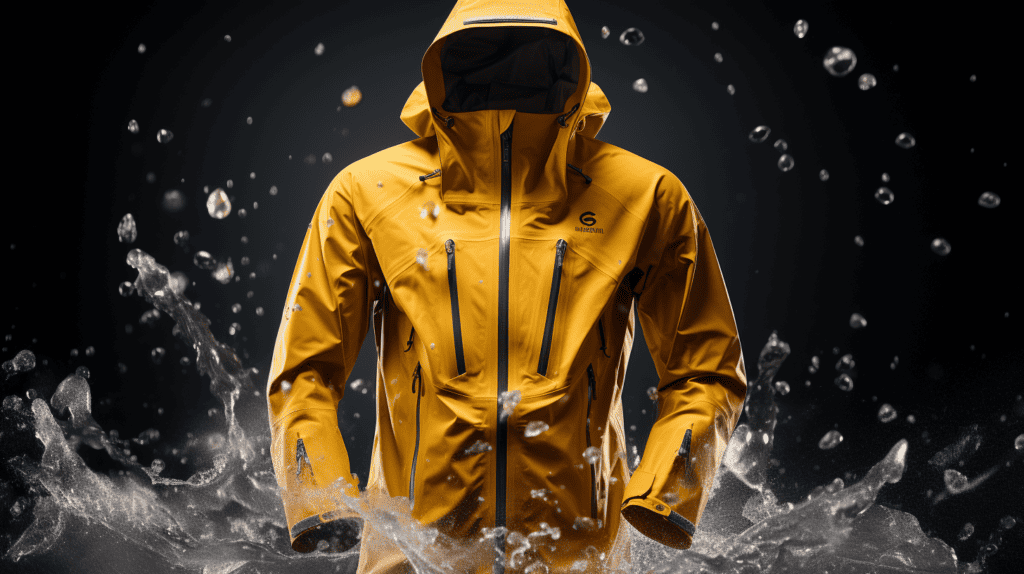How to Care and Maintain Your GORE-TEX Gear: A Comprehensive Guide

GORE-TEX gear stands as a beacon of innovation in the outdoor equipment landscape. Renowned for its unparalleled waterproofing and breathability, GORE-TEX gear offers adventurers the confidence to face nature’s unpredictability head-on.
But, like any high-quality equipment, the performance of GORE-TEX hinges on proper care.
Regular maintenance not only ensures that the gear retains its top-notch waterproof qualities but also significantly extends its lifespan. I wrote a separate guideline on how to take care of your gore-tex shoes if you want to check that out.
By understanding the inherent value of GORE-TEX products and the pivotal role of maintenance, users can maximize the benefits and durability of their gear, ensuring countless adventures in comfort and protection.
Key Takeaway
- Regular Cleaning: Dirt and oils can degrade the GORE-TEX membrane over time. Regular cleaning, according to the manufacturer’s instructions, is essential. Use mild detergent and avoid fabric softeners, bleach, or other harsh chemicals.
- Washing Instructions: Machine wash GORE-TEX gear with a gentle cycle in warm (not hot) water. Ensure all pockets are empty and zippers and Velcro fastenings are closed to prevent damage.
- Drying: Tumble dry on a gentle cycle at a warm temperature. Some GORE-TEX items can be ironed on a gentle setting (without steam) to rejuvenate water repellency. Always check the care label first.
- Reactivating DWR (Durable Water Repellent): Over time, the DWR finish on GORE-TEX gear can wear off. Reactivating it is possible by applying heat after washing – either by tumble drying or using a warm iron.
- Reapplying DWR: If water stops beading on the surface, it may be time to reapply a DWR coating. Use a DWR spray or wash-in product specifically designed for GORE-TEX or similar materials.
Understanding GORE-TEX Technology

At the heart of every piece of GORE-TEX Gear is a meticulously engineered membrane, designed to offer a unique balance of waterproofing and breathability.
This membrane boasts over 9 billion pores per square inch, each intricately sized to prevent water droplets from entering while allowing moisture vapor to escape. This dual functionality ensures that the GORE-TEX gear keeps adventurers dry, both from external elements and internal perspiration.
However, the performance of this membrane, as with all GORE-TEX gear, can be compromised without proper care.
Dirt, oils, and other residues can clog the pores, hindering its breathability and waterproof capabilities. Regular maintenance ensures that the membrane remains unobstructed and functions optimally.
By understanding the science behind GORE-TEX Gear and the importance of its upkeep, users can ensure consistent and reliable performance from their equipment.
Routine Maintenance and Care Tips

Maintaining the pristine condition of your GORE-TEX gear is important for its longevity and performance. Regular cleaning not only preserves its appearance but also ensures that its technical features remain at their peak.
Here’s a guide to help you navigate the cleaning process:
Recommended Frequency for Cleaning GORE-TEX Gear
It’s advisable to clean your GORE-TEX Gear after every 10 to 15 uses, especially if you’ve been exposed to dirt or sweat. However, if the gear only sees light use, cleaning it once or twice a season should suffice.
Suitable Detergents and Cleaning Agents

When it comes to GORE-TEX Gear, always opt for liquid detergents free from fabric softeners, bleach, or stain removers. These additives can clog the membrane’s pores and reduce its effectiveness. Brands like Nikwax Tech Wash or Granger’s Performance Wash are specifically designed for technical fabrics and are ideal choices.
Step-by-step Guide to Hand Washing
- Fill a basin with cool to lukewarm water and add a small amount of the chosen liquid detergent.
- Immerse the GORE-TEX Gear, gently agitating the water to remove dirt and residues.
- Rinse thoroughly with clean water to remove all detergent.
- Gently press out excess water without wringing, then lay the gear flat to air dry.
Step-by-step Guide to Machine Washing:
- Empty all pockets and close all zippers or fastenings on your GORE-TEX Gear.
- Set the washing machine to a gentle cycle with cool to lukewarm water.
- Add the recommended amount of liquid detergent.
- Once the cycle is complete, remove the gear promptly and hang it or lay it flat to air dry. Avoid using a tumble dryer unless specified by the product’s care label.
Drying and Storage

After cleaning, the way you dry and store your GORE-TEX Gear plays a crucial role in its longevity and performance.
Proper drying and storage methods can significantly extend the life of your gear, ensuring it remains ready for your next adventure.
Best Practices for Drying GORE-TEX Gear:
- Air Dry: Always opt for air drying your GORE-TEX Gear. Lay it flat or hang it in a well-ventilated area, away from direct sunlight or any direct heat source. This helps in preserving the integrity of the membrane and the fabric.
- Tumble Dry: If the care label permits, you can tumble dry GORE-TEX Gear on a low heat setting. This can help reactivate the Durable Water Repellent (DWR) treatment on the outer fabric.
- Avoid Direct Heat: Never place GORE-TEX Gear directly on heaters, radiators, or open flames. Excessive heat can damage the membrane and compromise the gear’s waterproof qualities.
Tips for Storing GORE-TEX Gear:
- Breathable Storage: Store your GORE-TEX Gear in a cool, dry place where it can breathe. Avoid sealing it in plastic bags or containers, as this can trap moisture and lead to mildew growth.
- Loose Folding: Instead of tightly folding, loosely roll or fold your GORE-TEX items. This reduces the risk of creases that can stress the fabric and membrane.
- Keep Away from Sharp Objects: Ensure that the storage area is free from sharp objects or edges that might puncture or tear the gear.
- Regular Inspection: Before storing for extended periods, inspect your GORE-TEX Gear for dirt, residues, or damages. Clean and repair if necessary to ensure it’s in prime condition for your next use.
Reapplying Durable Water Repellent (DWR)

The Durable Water Repellent (DWR) treatment on GORE-TEX Gear plays an important role in its water-resistant capabilities. Over time and with regular use, this treatment can wear off, affecting the gear’s performance.
Here’s a guide to understanding, selecting, and reapplying DWR to your GORE-TEX Gear:
Signs that your DWR Needs Reapplication:
- Wetting Out: Instead of beading up and rolling off, water starts to soak into the outer fabric. This phenomenon, known as “wetting out,” indicates a reduction in the DWR’s effectiveness.
- Reduced Breathability: When the outer fabric absorbs water, it can hinder the GORE-TEX membrane’s breathability, leading to moisture build-up inside the gear.
- Age and Usage: If your GORE-TEX Gear has been in use for an extended period or has undergone multiple wash cycles, it might be time for a DWR refresh.
Guide to Selecting the Right DWR Spray or Wash-in Product:
- Compatibility: Ensure the DWR product is compatible with GORE-TEX or other technical fabrics.
- Spray vs. Wash-in: Sprays are ideal for targeting specific areas, while wash-ins treat the entire garment. Choose based on your gear’s needs and personal preference.
- Eco-friendly Options: Consider environmentally-friendly DWR products that don’t contain harmful chemicals or PFCs. Brands like Nikwax and Granger’s offer eco-conscious solutions.
Application Process for Restoring Water Repellency:
- Clean First: Before reapplying DWR, ensure your GORE-TEX Gear is clean. Residues or dirt can hinder the DWR application.
- Follow Product Instructions: Each DWR product will have specific application instructions. Adhere to these for optimal results.
- Spray Application: For sprays, evenly coat the outer fabric from a distance, ensuring full coverage. Allow it to dry naturally or use a tumble dryer if the gear’s care label permits.
- Wash-in Application: Add the DWR product to your washing machine’s detergent compartment and run a gentle cycle. Post-wash, air dry, or tumble dry based on the gear’s care instructions.
Reapplying DWR is a straightforward process that can significantly enhance the performance and lifespan of your GORE-TEX Gear. Regular checks and timely reapplications ensure that your gear remains ready to face the elements, come what may.
Addressing Wear and Tear

Even the most durable GORE-TEX Gear, with time and consistent use, can show signs of wear and tear. Addressing these issues promptly can extend the life of your gear and ensure it continues to protect you effectively.
Here’s how to identify, fix, and decide when to seek professional help:
Identifying Common Signs of Wear
- Surface Abrasions: These are superficial scratches or scuffs on the outer fabric, often resulting from contact with rough surfaces or sharp objects.
- Punctures or Tears: Small holes or tears can develop from sharp objects, branches, or accidental snags.
- Seam Damage: Over time, the seams, especially in high-stress areas, can start to fray or come apart.
- Delamination: This refers to the separation of the GORE-TEX membrane from the outer fabric, often visible as bubbling or peeling areas.
- Fading or Discoloration: Prolonged exposure to sunlight or harsh detergents can lead to color changes in the fabric.
DIY Fixes for Minor Damages:
- Patch Kits: For small punctures or tears, GORE-TEX patch kits or adhesive patches can provide a quick fix. Ensure the area is clean, then apply the patch following the kit’s instructions.
- Seam Sealers: If you notice minor leaks along the seams, seam sealers can help. Apply a thin layer over the affected seam to restore its waterproof integrity.
- Mild Detergent: For surface stains or discoloration, gently scrubbing with mild detergent and lukewarm water can help restore the gear’s appearance.
When to Seek Professional Repair Services:
- Major Tears or Holes: If the damage is extensive, a simple patch might not suffice. Professional services can offer more durable solutions.
- Complex Issues: Problems like delamination or widespread seam damage are best addressed by professionals who have the tools and expertise to handle them.
- Warranty Considerations: If your GORE-TEX gear is still under warranty, it’s advisable to consult the manufacturer or authorized repair centers before attempting DIY fixes, as some repairs might void the warranty.
Avoiding Common Mistakes
Proper care of GORE-TEX Gear not only involves knowing what to do but also understanding what not to do.
Certain practices, often rooted in misconceptions, can inadvertently degrade the quality of your gear. Here’s a guide to sidestepping these pitfalls:
List of Practices to Avoid that Can Degrade GORE-TEX Quality:
- Using Harsh Detergents: Avoid detergents with bleach, fabric softeners, or stain removers. These can clog the membrane’s pores and reduce its effectiveness.
- Direct Heat Exposure: Never dry GORE-TEX Gear directly on heaters, radiators, or open flames. Excessive heat can damage the membrane and outer fabric.
- Tight Folding or Compression: Storing GORE-TEX items tightly folded or compressed for extended periods can stress the fabric and membrane.
- Ignoring Dirt and Residues: Allowing dirt, sweat, or other residues to sit on the gear for long durations can affect its breathability and waterproofing.
- Overwashing: While keeping gear clean is essential, excessive washing can wear out the fabric and DWR treatment faster.
Addressing Myths and Misconceptions about GORE-TEX Care:
- “GORE-TEX Can’t Be Washed”: Contrary to this myth, GORE-TEX Gear benefits from regular cleaning. Proper washing can restore its performance and extend its lifespan.
- “Any DWR Works the Same”: Not all DWR treatments are created equal. It’s essential to choose products specifically designed for GORE-TEX or similar technical fabrics.
- “GORE-TEX is Indestructible”: While GORE-TEX Gear is designed for durability, it’s not immune to wear and tear. Regular inspections and timely repairs are crucial.
- “Ironing is Harmful”: While direct heat is detrimental, using a cool iron with a protective cloth can help reactivate the DWR treatment on some GORE-TEX products.
Benefits of Proper Maintenance

Taking the time to care for your GORE-TEX Gear yields dividends, not just in the short term but over the entire life of the product.
Proper maintenance goes beyond mere aesthetics; it directly impacts the gear’s functionality and durability.
Here are the tangible benefits of regular and appropriate care:
- Enhanced Lifespan of the Product:
Regular maintenance ensures that the fabric, membrane, and other components of your GORE-TEX Gear remain in optimal condition. By addressing minor issues promptly and avoiding practices that degrade quality, you can significantly extend the life of your gear, ensuring it serves you well for years if not decades. - Consistent Waterproofing and Breathability Performance:
The hallmark of GORE-TEX Gear is its unparalleled balance of waterproofing and breathability. Proper care, such as cleaning and timely DWR reapplication, ensures that this balance remains undisturbed. Whether you’re facing a downpour or an intense hike, well-maintained GORE-TEX Gear guarantees consistent protection and comfort. - Cost Savings in the Long Run:
While investing time and resources in maintenance might seem like an added expense, it results in substantial savings over time. Well-maintained GORE-TEX Gear reduces the need for frequent replacements. Additionally, by avoiding major damages through timely minor repairs, you save on potential costly fixes or the need to purchase new gear.
Conclusion
From understanding the delicate balance of the GORE-TEX membrane to mastering the art of reapplying DWR, addressing wear and tear, and debunking common myths, your commitment to upkeep reflects your dedication to each adventure.
Proper maintenance not only ensures the consistent waterproofing and breathability that GORE-TEX gear promises but also leads to significant cost savings in the long run.
So, as you prepare for your next venture into the great outdoors, remember that your gear is more than just equipment; it’s a dependable companion. And like any companion, it thrives when nurtured.
Understanding how to properly care for your gear not only prolongs the life of your GORE-TEX but also enhances its ability to shield you from nature’s whims, enabling you to forge ahead with confidence and comfort, ready for the adventures that await.
FAQs
What is the alternative cycle to use if my machine doesn’t have a permanent press setting?
If your washing machine doesn’t have a permanent press setting, use the delicate cycle instead. It’s gentle on fabrics and works well for washing GORE-TEX gear. Use a mild detergent, cold water, and a low spin cycle. Avoid fabric softener. Hang your gear to dry or use a low heat setting on your dryer. If you’re not sure which cycle to use, check your washing machine manual.
Can I use bleach?
No. Bleach can damage the fabric and the waterproof membrane, so it’s best to avoid using it on GORE-TEX gear.
Can GORE-TEX garments be dry-cleaned?
Yes, but it’s best to follow the manufacturer’s care instructions. Ask the dry cleaner to use a clear, distilled hydrocarbon solvent rinse and a wash-in or spray-on DWR repellent treatment after dry cleaning.
How many years does Gore-Tex last?
With proper care, GORE-TEX gear can last for many years, but it is more common for GORE-TEX gear to last for 3-5 years with regular use. To prolong the lifespan of your GORE-TEX gear, wash it regularly with a mild detergent and cold water, hang it to dry, reproof it regularly with a DWR spray, and repair any damage as soon as possible.
Is it okay to use stain remover on GORE-TEX?
No, it is not recommended to use stain removers on GORE-TEX. Stain removers can damage the fabric and the waterproof membrane. If you have a stain on your GORE-TEX garment, try to remove it with a mild detergent and cold water. If the stain is difficult to remove, you can take your garment to a professional cleaner.
If you must use a stain remover, test it in an inconspicuous area of the garment first.






